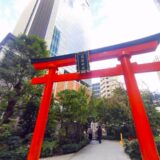目次
- 【Yasukuni-jinja Shrine summary】
- 【Yasukuni-jinja Shrine road approaching a shrine Statue of Masujiro Omura】
- 【Yasukuni-jinja Shrine precincts】
- 【Yasukuni-jinja Shrine scenery】
- 【Yasukuni-jinja Shrine GOSHUIN】
- 【Yasukuni-jinja Shrine Nearby attractions】
- 【Yasukuni-jinja Shrine Access】
- Manager’s Comments
- Yasukuni-jinja Shrine
【Yasukuni-jinja Shrine summary】
Yasukuni Shrine was originally a Shinto shrine built by Emperor Meiji in the 2nd year of Meiji Era. The name “Yasukuni” means “to give peace to the country” and the name of Yasukuni Shrine was changed to Yasukuni Shrine in the 12th year of Meiji with the wish to “restore peace to the country” and “to build a peaceful nation”. The shrine is said to have been founded in 1869 and enshrines the spirits of the gods from the end of the Edo period to the Greater East Asia War.
![Yasukuni-jinja Shrine [Tokyo] DSC 0014 1024x768 - Yasukuni-jinja Shrine [Tokyo]](https://japan-shrine.info/wp-content/uploads/DSC_0014-1024x768.jpg)
It is the head shrine of the National Shinto religion, but after the war, GHQ abolished the National Shinto religion and reestablished it as a religious corporation. While other shrines enshrine the deities of the past, the “deities” enshrined at Yasukuni Shrine are soldiers, civilians, and others who died in war or were wounded or died of disease, and whenever new war dead occur, the procedure of enshrinement is taken to add them to the “deities” list. The number of deities enshrined at the shrine exceeds 2,466,000. Among the older deities enshrined at the shrine are Shoin Yoshida, Ryoma Sakamoto, Shintaro Nakaoka, Sanai Hashimoto, and Hanpeita Takeichi. The late Lee Teng-hui, the elder brother of the former Taiwanese President Lee Teng-hui, who was a soldier in the Japanese army, is also worshipped here. Why don’t people from Taiwan visit the shrine? The shrine offers blessings such as gratitude to the gods, national security, family safety, protection from bad luck, and prosperity of business.
【Yasukuni-jinja Shrine road approaching a shrine Statue of Masujiro Omura】
![Yasukuni-jinja Shrine [Tokyo] DSC 0017 1024x768 - Yasukuni-jinja Shrine [Tokyo]](https://japan-shrine.info/wp-content/uploads/DSC_0017-1024x768.jpg)
After passing through the first torii gate, you will see the oldest bronze statue in Japan, that of Masujiro Omura. He was a village doctor in Suo, Choshu, who led his people to victory in the Boshin War and laid the foundation of Japan’s army during the turbulent period between the end of the Edo period and the Meiji Restoration. Yasukuni Shrine was selected by Omura Masujiro.
【Yasukuni-jinja Shrine precincts】
![Yasukuni-jinja Shrine [Tokyo] DSC 0028 1024x768 - Yasukuni-jinja Shrine [Tokyo]](https://japan-shrine.info/wp-content/uploads/DSC_0028-1024x768.jpg)
A beautifully maintained and cleaned approach leads to a large shrine. There are many cherry trees on the grounds, and someiyoshino, the standard tree in early spring, often appear on TV. The best time to visit the shrine is during the cherry blossom season.
![Yasukuni-jinja Shrine [Tokyo] image 1 - Yasukuni-jinja Shrine [Tokyo]](https://japan-shrine.info/wp-content/uploads/image-1.jpeg)
The “hall of worship” often seen on TV was completed in 1901, the year of the Emperor Showa’s birth. In contrast to the linear beauty of the main hall, the worship hall has a curvilinear beauty that is skillfully incorporated into the building.
In the Yushukan, there is a panel exhibit of photos and articles left behind by those who died in the war, and visitors can listen to explanations of each item using a smartphone app. There is a fee to visit the Yushukan, but the entrance hall, where the Zero-sen, locomotive, and cannon are displayed, is free of charge. The museum displays a vast amount of photos and historical facts, including letters written by soldiers to their loved ones and families.
【Yasukuni-jinja Shrine scenery】
The precincts of the shrine have a solemn atmosphere, which makes me somewhat sad. However, without political reasons, the shrine is very beautiful with the decorations of the hall of worship and the open approach to the shrine. After visiting the Yushukan and the Noh theater, please go to the Shinchi Garden at the back right corner of the hall of worship. The pond has clear water and many magnificent Nishikigoi carp swim in it. You will be surprised to see the thickest Nishikigoi you have ever seen. You can also enjoy the summer festival period during the “Mitama Festival” held from July 13 to 16, when over 30,000 votive lanterns and votive paper lanterns are displayed in the precincts of the shrine and the shrine is crowded with visitors.
![Yasukuni-jinja Shrine [Tokyo] DSC 0018 1024x768 - Yasukuni-jinja Shrine [Tokyo]](https://japan-shrine.info/wp-content/uploads/DSC_0018-1024x768.jpg)
【Yasukuni-jinja Shrine GOSHUIN】
![Yasukuni-jinja Shrine [Tokyo] yasukuni letter 660x1024 - Yasukuni-jinja Shrine [Tokyo]](https://japan-shrine.info/wp-content/uploads/yasukuni-letter-660x1024.jpg)
Red seal ink writing in red ink at Yasukuni Shrine is 500 yen, and red seal writing on the plaque is 300 yen (2023)
【Yasukuni-jinja Shrine Nearby attractions】
Tokyo-daijingu Shrine, Imperial Palace
【Yasukuni-jinja Shrine Access】
Manager’s Comments
I know that there are many opinions about visiting Yasukuni Shrine, but it is an undeniable fact that Japan exists today thanks to the spirits enshrined at Yasukuni Shrine, so if we are able to live happily, it is natural for people to visit the shrine with gratitude.
4-1, Fujimi 2-chome, Chiyoda-ku, Tokyo 102-0071, Japan
※Paid parking is available. However, free of charge for those who officially visit the main shrine.
 Tour of Japanese shrines and temples
Tour of Japanese shrines and temples 

![Yasukuni-jinja Shrine [Tokyo] 26709359 m 520x300 - Yasukuni-jinja Shrine [Tokyo]](https://japan-shrine.info/wp-content/uploads/26709359_m-520x300.jpg)
![Yasukuni-jinja Shrine [Tokyo] DSC 0348 520x300 - Yasukuni-jinja Shrine [Tokyo]](https://japan-shrine.info/wp-content/uploads/DSC_0348-520x300.jpg)
![Yasukuni-jinja Shrine [Tokyo] itsukushimajinja1 150x150 - Yasukuni-jinja Shrine [Tokyo]](https://japan-shrine.info/wp-content/uploads/itsukushimajinja1-150x150.jpg)
![Yasukuni-jinja Shrine [Tokyo] DSC 1374 150x150 - Yasukuni-jinja Shrine [Tokyo]](https://japan-shrine.info/wp-content/uploads/DSC_1374-150x150.jpg)
![Yasukuni-jinja Shrine [Tokyo] DSC 03512 150x150 - Yasukuni-jinja Shrine [Tokyo]](https://japan-shrine.info/wp-content/uploads/DSC_03512-150x150.jpg)
![Yasukuni-jinja Shrine [Tokyo] DSC 0153 1 150x150 - Yasukuni-jinja Shrine [Tokyo]](https://japan-shrine.info/wp-content/uploads/DSC_0153-1-150x150.jpg)

